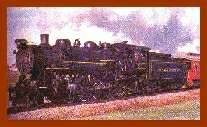|
3.3 The Industrial Revolution
The industrial revolution was a crucial event in European as well as World history. It may be defined as the displacement of hard labor by machine power in many of the processes of manufacture and mining. Vast economic and social changes were made by which a medieval agricultural society was transformed into a modern industrial society. The Revolution was neither violent nor sudden but it was a gradual process of change spread over 150 years. The changes produced fundamental and startling that they may be described as 'revolutionary.'
Knowles remarks "the term Industrial Revolution is used not because the process of change was quick but because when accomplished the change was fundamental." The changes were so far-reaching and profound, so tragic in their mixture of good and evil, so dramatic in their combination of material progress and social suffering that they may be described as revolutionary.
3.3a The Industrial Revolution in England
The essence of the Industrial Revolution was the adoption of large-scale production by means of power-driven machinery in big factories. These could only be established and maintained by a large expenditure of capital. Only organized gangs of wage-earning hands could work on these machines. It was science that made this revolution possible. During the Age of Reason, major laws which afforded a new outlook to science were discovered.
The Revolution in Industry first began in England in the 18th
century. By 1830 it spread throughout Europe and elsewhere. There
are various reasons why the Revolution first occurred in England.
England had abundant capital facilities for a worldwide market,
free and enterprising people and scarcity of labor. It not only
enjoyed peace and security, but also had great natural resources
of iron and coal, a commercial fleet and mild and stimulating climate
all favorable for the development of the industrial system.
3.3b The Invention
The earliest mechanical invention came in the textile industry, it changed completely the spinning and weaving processes. The invention of the Flying Shuttle by James Kay (1733) helped the weaver to weave more quickly. The invention of the Spinning Jenny by Hargreaves (1770) quickened the pace of spinning. The Water Frame invented by Crompton (1779) turned out stronger and finer threads and substituted water power for man power, and the Power Loom produced by Cartwright (1785) gradually displayed the handloom and enabled the weaver to keep pace with the spinner. These inventions revolutionized the production of cotton textiles in England.

Exhibit 3.1
An early steam engine
|